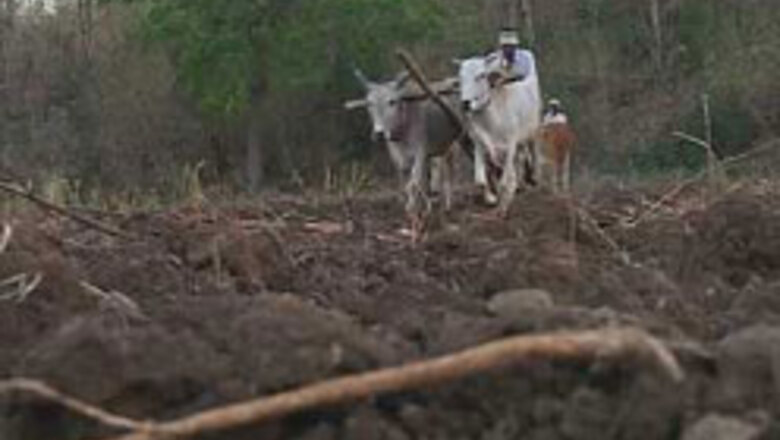
views
New Delhi: The adage 'as you sow, so shall you reap' may have lost meaning in the crisis-ridden farm sector with its share in the economy declining to less than a quarter, but the Centre now appears focused to revitalise the sector that supports 60 per cent of the country's workforce.
The situation, nothing less than alarming, was aptly portrayed by Prime Minister Manmohan Singh at the National Development Council meeting on Saturday when he said: "With about half of the rural population still dependent on it for most of their income, we cannot expect inclusive growth if we do not revitalise agriculture."
"We are not spending enough on irrigation and what we are is not being utilised efficiently," he lamented.
According to official estimates, the farm sector needs to expand by four per cent annually in order for the country to sustain over eight per cent economic growth achieved in the last three fiscals.
However, growth in the sector shrinked to a low 1.7 per cent in the second quarter of this fiscal from over 3 per cent in the first quarter.
The Prime Minister too pointed out that growth in the farm sector has been less than two per cent per annum since the middle of 1990s and made it clear it would be difficult to sustain a high growth rate without revitalisation of farm sector. "Top priority" must be given to redress the weaknesses in agriculture sector during 11th Plan (2007-2012), he said.
"Though the weaker groups clearly face more difficulties and need special attention agriculture as a whole is in crisis," he had said at the meeting of NDC, which approved the approach to the 11th Plan.
Singh said there was need to focus on achieving higher productivity and incomes for all farmers in both agriculture and its allied sectors.
Expressing similar views, Planning Commission Deputy Chairman Montek Singh Ahluwalia said there was a need to shift to 'farms system approach' including non-crop agriculture (dairy, poultry and fisheries). Livestock would sustain the farmers, particularly in water-scarce areas, he added.
On increasing investment in irrigation, he said states must increase plan allocation, while the Centre could help through extended assistance for the purpose.
PAGE_BREAK
Pointing out that 60 per cent of the cultivable area would remain rainfed even after maximum use of irrigation potential, Ahluwalia emphasised on adopting a strategy for effective water management.
The other elements of agricultural strategy to revitalize the sector include improved cultivation practices, improving extension services, raising seed replacement rate, removing micro-nutrients deficiency in soil and revival of co-operative credit institutions, he said.
Some of the other strategies suggested by Ahluwalia were encouraging contract farming and refocus on land reforms and land tenure issue.
According to the Approach Paper, reversing the declining growth rate in the farm sector was "one of the major challenges of the 11th Plan".
The growth rate declined from 3.2 per cent during 1980-97 to a trend average of 2 per cent subsequently, it said. The deceleration was having effect on farms of all size, the Paper said and suggested corrective policies to focus on small, middle and large farmers who suffer from productivity stagnation.
To put agriculture on a growth path of around four per cent would require augmenting demand for farm produce, rise in productivity and capacity improvement of research system.
This would necessitate appropriate change in policy and well-directed public efforts, the Approach Paper said. It found increasing agriculture incomes "vital" as the sector employs nearly 60 per cent of India's labour force.
Farm sector growth was important not only for food production and increase income levels but also to create rural demand to support non-farm growth, the Paper said.
It also emphasised on exploiting existing technologies more intensively, which would require greater efforts from farmers or more labour saving machinery, to attain the gains targeted during 11th plan.
"Most of the growth required in cereals, pulses and oilseeds is possible merely by narrowing the gap between actual yields and those achieved during scientific trials on farmers fields," the Approach Paper said.
The elements required to raise farm output as outlined in the Paper include, doubling the growth rate of irrigated area, providing credit at affordable rates, promoting animal husbandry and fishery, refocusing on land reform issues and diversifying into high value items like fruits and vegetables.
Improving the incentive structure and functioning of markets, bettering water management, rain water harvesting and watershed development and reclaiming degraded land and focus on soil quality were some other key elements highlighted in the Paper for raising production.















Comments
0 comment